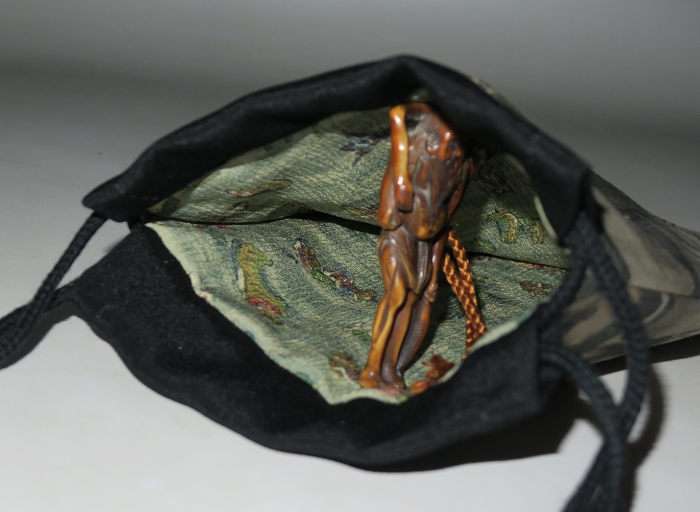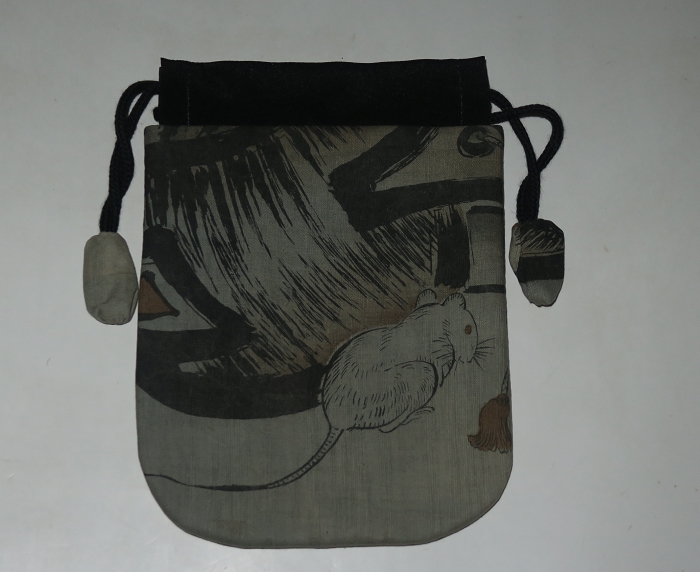
落着いた緑灰系地に、墨絵風の小槌や遊ぶネズミたちなど縁起柄。掛け軸にでもありそうな味わい深い柄の木綿更紗時代物着物地で作ったソフトケース。キルト芯を入れてふんわり柔らかい、出し入れも簡単。陶器など大切なお品の保護、アクセサリ-入れとして観劇やお出掛けのお供に。
約縦17×横13cm
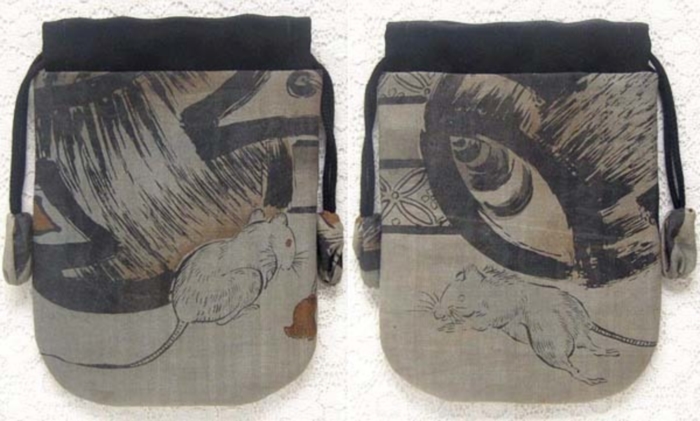
和服之美,手工之精—稀见水墨画风格鼠戏题材木棉大方袋
长崎和服师藤本秀子作品。木棉取自上等古和服,里外双面工,结实美观。灰绿色背景彩绘木槌、戏鼠等吉祥图案。罕见的浓墨山水画风格,雅致精细,甚至可作为画作欣赏。布芯柔软蓬松,放入取出方便。保护贵重物品如酒器、手把件的不二之选,这种题材的和服贵重稀少,取材十分难得。外观高雅的佳作,最适合有品位的女性使用。
约长17×宽13cm
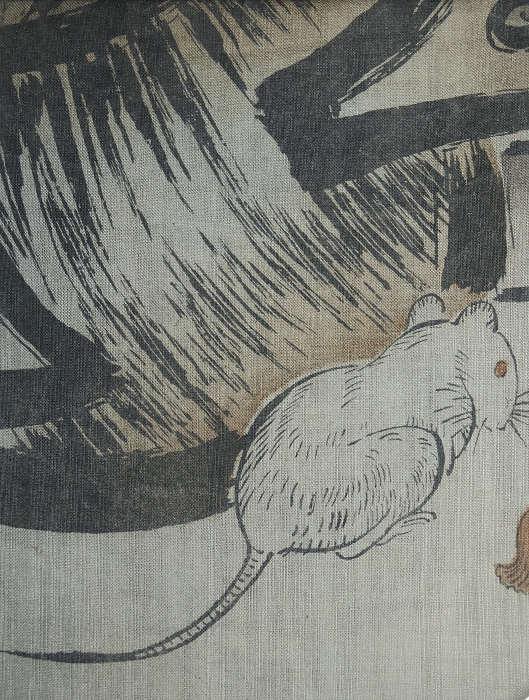
Japanese clothing
There are typically two types of clothing that the Japanese wear: the Japanese clothing (和服wafuku), such as kimonos, and Western clothing (洋服yōfuku). Japanese traditional fashion combines multiple styles that reflect early Japan’s visual culture. It represents the culture’s visible artistic and traditional values and joins them together to create a form of fashion recognizable to foreign cultures.
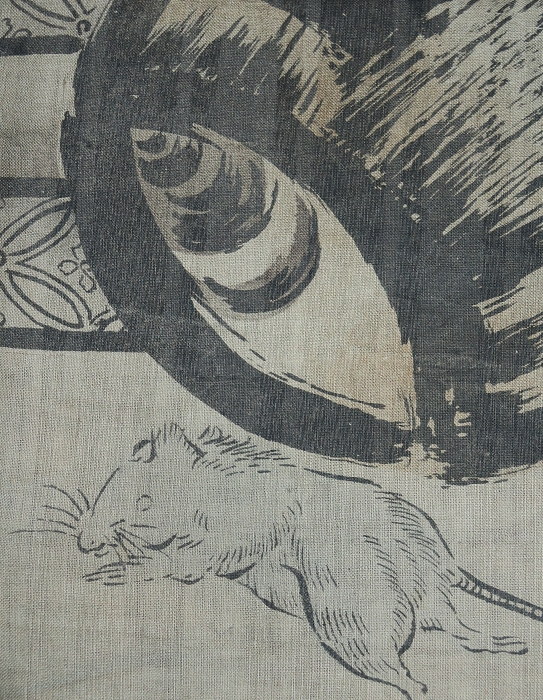
The most well known form of Japanese traditional fashion is the kimono (translates to “something to wear”), Although the traditional wear for Japan became popularized during the Heian period (794-1185) and was worn casually at the time, it is now rare to find people doing so due to the difficult process associated with the wardrobe.
Each type of garment corresponds to a special occasion, such as festivals, ceremonies, or weddings. The materials, colors, and layers used for the clothing differentiate them and their significance, as the looks are also often worn seasonally. The clothing that embodies the culture represents Japan’s traditional values that remain in their community to this day.
